The Ministry of Defence has published a pipeline notice for a new assessment phase to develop a future Mounted Short Range Air Defence (SHORAD) capability, signalling continued efforts to modernise the British Army’s ground-based air defences.
Issued on 21 May 2025 by Defence Equipment and Support (DE&S), the notice outlines a £48 million programme to explore vehicle platforms and systems integration options for a new mobile SHORAD capability. The contract is expected to run from 1 August 2025 to 31 December 2028.
The project, referred to as the Mounted SHORAD Fire Unit (MSFU) and Multi Mission System (MMS) Assessment Phase, will inform the selection of platforms and technologies capable of providing both medium-range and short-range air defence in manoeuvre environments.
The system under development is intended to deliver a highly mobile, integrated air defence capability able to protect UK ground forces from threats such as aircraft, helicopters, drones, and potentially cruise missiles. This is part of a broader push to restore layered air defence in the British Army after years of limited capability in this domain.
The contract includes work across several categories, including armoured vehicles, weapons integration, and military vehicle development, and is classified under multiple CPV codes including 35410000 (armoured military vehicles) and 73423000 (development of military vehicles).
This notice is a UK1 pipeline update under the Procurement Act 2023, which requires publication of upcoming contracts above £2 million. It indicates that a formal tender process for the assessment phase is expected to follow, and gives industry early visibility of the opportunity. The procurement is flagged as suitable for small and medium-sized enterprises (SMEs), aligning with the MOD’s policy of increasing SME participation in defence supply chains.


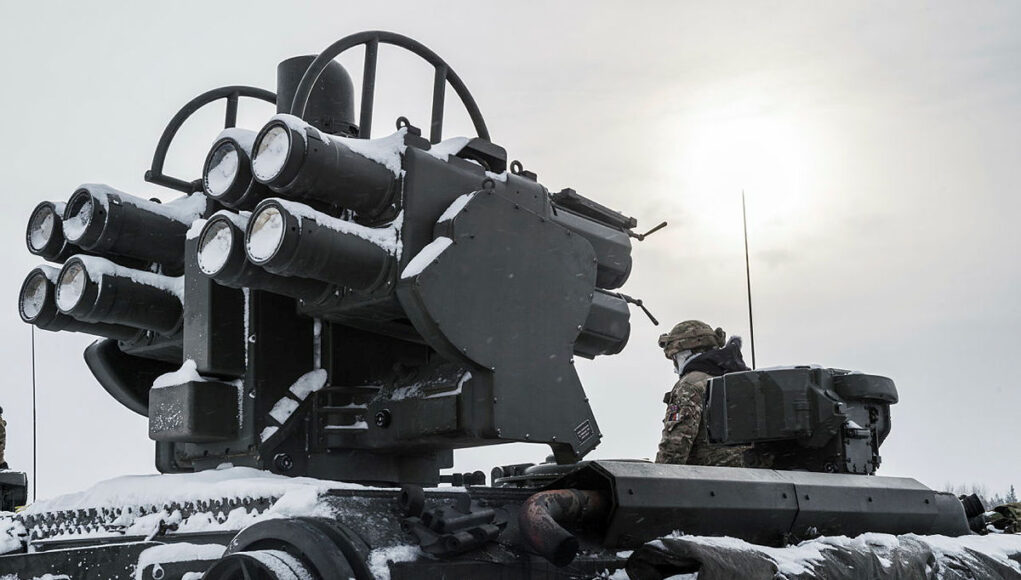
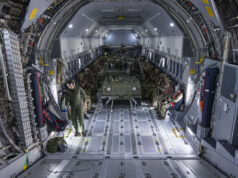



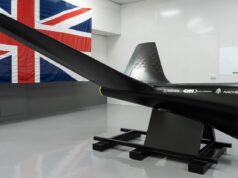


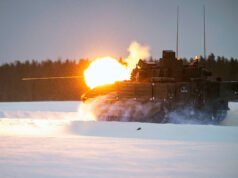

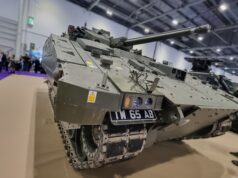

A pipeline notice for a new assessment phase to develop a future capability…. FFS
So..to summarise we can expect bog all improvements to the woeful SHORAD of our armed forces and their bases until this waste of £46 million is chucked out and 3 years later. Guess what? Things will have moved on and still SHORAD won’t have been grappled.
James. This jargon keeps on getting invented. ‘Pipeline notice’ did not exist as a term when I was at DE&S in 2009-2011.
What happened to VAMTAC?
I believe the Vamtecs were a temporary replacement for the Stormers sent to Ukraine.
Yes. But no idea if they’ve actually arrived yet, I’ve not seen any reports.
48 million to assess to 2028?
The MIC is loving it.
In this case an assessment phase is probably valid. Not in the US has the capability to delay with fpv drones or strikes like Russia did involving multiple hundreds of drones. Any existing tech is completely out of date. The ground based phallanx is probably the closest thing to being there but its ammo load is too limited that it would run out far too quickly.
Something like the Gepard combined with something like the hryda 70 rocket pod, is probably the closest thing to be able to deal with the new modern battlefield.
Laser tech and microwave is still a long way from being field deployable due to the amount of electricity needed, which isn’t viable over any length of time. All fine having them plugged into the national grid and showing their capability but only so many batteries a military cross country vehical can handle.
How many Raven could we buy for £48 million?
Raven isn’t ideal, it’ll do for what Ukraine needs (that sounds off, it’ll do when there is nothing else) but its literally a cobble together.
Raven isn’t ideal as it only has 2 missiles. Useful as part of a rapid deployment unit as part of layered air defence system but not as a front line unit acting in isolation.
Given the choice of nothing or Raven in service quickly, I would take Raven.
Ukraine’s at war, so it needs something quickly cobbled together.
The UK isn’t, so we have the time to choose something more effective.
Answer is a lot. But we can’t have something cheap, off the shelf and surprisingly effect. We’ve got to waste 3 years and £46 million on considering the issue until the cows come home.
Problem with Raven is two-fold:
It’s a cobble together that works but may not be ideal, as said previously.
It uses a very high end solution (ASRAAM) with low magazine capacity to the problem of high volume attacks; Russia is sending hundreds of Geran/Shahed drones in waves against Ukraine.
It’s the solution they have, it works, and is a good way of using end of life missiles. But when they run out, you’re needing a huge supply of brand new ones, and a large support unit for all the reloads.
I have to agree with Steve, I may question the cost of the review, but I think we need to look at the options, rather than jump on Raven. Maybe send a few to support our battle group in Lithuania, but it shouldn’t be the long-term solution.
A bird in the hand, is worth two in the bush. As the old saying goes. For British Forces in vulnerable spots (Estonia, Cyprus, Lossiemouth) a Raven battery would be a good near term stop gap, until something fancier can be developed/bought/afforded.
So you want us to buy obsolete air to air missiles… 🤦🏻♂️
I thought we were using up existing missiles. Would you rather leave our forces defenceless & blow the money on lovely trips for senior civil servants instead?
Excellent!! Let’s get started shall we? Let’s see, first we’ll commission endless trials to inform future decisions, then a bit of gaining a deeper understanding, and has anyone thought of more agile, more lethal?? Tea and biscuits all round!!
Seriously though, how difficult can it be to mount a Martlet launcher or similar to a Jackal or something?
Its endless. 🙄
Well, the MoD/Treasury must have many years of business class flights, 4/5 star hotels & many excellent lunches before making any decisions.
Darn auto correct. “Not even the US has the capability to deal with fpv drones”
‘Will inform the selection of platforms’….Ares, Boxer, Patria or Toyota?
Just ask Supacat I’m sure they can come up with a version of Raven!
Supacat HMT with a Moog turret that has a 8 missile launchers and, i think, 30mm bushmaster. Check it out.
And a 7.62 mm machine gun
Sorted and no doubt a lot cheaper than£48m 👍
Also module and flexible,.
100 percent agree with you on the moog turret as its interchangeable and easy to adapt to any units need across all branches, buuuut definitely not the sc hmt with all that extra weight and mounted high I reckon it will roll a he’ll of a lot.
I’m sure Supacat would have taken that into consideration. However, a smaller vehicle would be more air transportable and compact. I wonder is a supavat can be adapted to make a shore based anti ship platform, like what the US marines have.
If it’s for drone defense, I’m sure an MSI DS30M MK2 turret on a Supacat truck with the 5 pack Martlet rail would work wonders.
Check out the Supacat HMT with a Moog turret
Fit the German Gepards onto the Bulldogs 😂
The thing is there is now so much need for air defence across multiple levels of capability. Short range air defence now really needs to start at section level, because the risk is now at section level.. a grenade dropped by a first person drone is a risk that needs management at section and platoon level and it needs to be able to manage large numbers.
Then you have larger drones that can launch kinetic effects from range..
Then you have traditional tactical air level ( rotors and ground attack aircraft).
The first two cannot be managed at brigade or even battalion battle group level and instead need a mass of organic short range air defence down to section level ( essentially sections need the ability to detect drones and attack them out to the 1Km range and they need to be able to do this many times).
This then is not traditional Short and medium range air defence capability.. so you then need that as well
1) something to deal with large numbers of attrition sub tactical drones that can carry an effector or 2 with a range of a few Km. So this needs to be able to engage out to about 5km probably gun oriented for impact on mass ( a 40-57mm gun with potentially guided rounds )
2) then the thing that can deal with the traditional tactical air support, so a missile that can engage out to 10km -20km
3) Then you need an air defence for you more strategically important mobile elements, such as you logistic, command and medical hubs as well as you long range fires and tactical air. As well as covering a wider front This falls between tactical and strategic 25-50km range missile system.
4) finally your strategic air defence for your key static hubs and basis.. this should be long range ( 120km +) as well as able to manage stealth and ballistic missiles threats.
Defence in depth.
For section level, I’m thinking 25 or 30mm underslung smart AB grenades instead of the more bulky 40mm, with some sort of helmet mounted directional microphones linked to the sights.
For platoon level, it’s a 4×4 mounted 30mm RWS with smart AB ammo and directional microphones and radar, plus a few Martletts bolted on for bigger targets.
All supported by Land Cepter at a local level, and Airborne systems and a bigger ABM system further back.
The MOD is going to think about it for the next 3 years, no hurry then.
Oh good. Another study. Just what we need.
Will this £48 million actually lead to any actual hardware and weapons? or just a cash chuck out to the defence industry, we know whats out there and what we need surely? there is a real war going on in Ukraine- something with an ASRAAM and gun/ direct energy weapon so we have multi layered approach is required.
Failing an ASRAAM launcher then Martlet/ LMMM with guidance module- we dont need another useless waste of £48 million and a delay in decision making by 3-5 years because we are undertaking a specking exercise. FFS, its not like there is a war on in Europe against an enemy that has repeatedly threatened the UK and would like nothing more than to destroy our armed forces and our way of life.
We need weapons not investigations into potential weapons.
Now now We need at least 3yrs to find the most niche,gucci and expensive bit of kit that will take an absolute age to get into service!
It’s a cash chuck. With little attempt being made to hide the fact these days.
Of course not!
Just more pork thrown at the MIC.
I would expect to see massive amounts of pork thrown at the MIC with the new NATO deal coming up… essentially 1.5% is going be pretty much nothing but pork. It’s what the US wants NATO to do as that’s what the US understands defence to be.
Thing is, there needs to be pork thrown at the conventional military at the same time!!
I don’t see anything.
We await the SDR and your confident predictions post NATO summit.
I agree I have no issue with the MIC getting thrown lots of pork.. it makes good jobs, is good for the economy and vital to win that long peer war you must win.. but you correct it does actually need to be producing something that goes to a military that is in a state to use it.. let’s keep our fingers crossed for that 3.5% new escorts, 30 more F35, 30 more typhoons ( with an extra squadron each ) 40 medium rotors.. 70 odd 155mm systems in hand, another 80 MBTs , 1000 APCs ( cheap ok 25-30 ton ones.. not stupid 40ton hyper expensive ones), 200 IFVs.. a land based anti ballistic missile air defence systems.. and about 5 more regiments of CAMM.. 3 medical regiments, 3 mechanical and electrical engineering regiments 3 logistics regiments… ohhh and 5 more SSNs… it’s not a lot to ask
Whhoooo hooo! Yet another study.
The Americans have already done the leg work for us which SHORAD with Sgt Stout. Moog turret is perfect can integrate hvm/lmm for FW and RW, and cannon for drones with potential to swap out parts as new tech comes in. They have it on stryker but could easily go on patria if that gets selected in the Land mobility program for the rear and potentially a few on ares to provide that close protection
Supacat HMT has a demonstrator with the Moog turret.
Can’t add much to everyone above but wonder if Starstreak and Martlet can get a bit of ER treatment and adapted onto the Paladin platform. Where’s the CAMM MR at? Any mixed CAMM launchers? As suggested by SailorBoy before, a more compact 1/2 CAMM for vehicle launch? Containerised/modular CAMM even Barge CAMM. Trump’s promoting a “Golden Dome” for the USA, surely the UK is doing something quietly behind the scenes?
There’s a few options available for an interim/urgent operational requirement SHORAD out there, whilst a more dedicated capability is created. Why there isn’t an Urgent Operational Requirement to be delivered ASAP, then they can do a proper study into other long-term options, is beyond me.
– Moog is offering a turret solution with eight LMMs, or Starstreak, or a mix of both: with also either a 30mm cannon with air-burst rounds on the HMT-600 chassis, or eight missiles and a 7.62mm machinegun option for the smaller Dingo 3 chassis: they showed it off recently at IAV 2025. Maybe have Moog do a beefed up turret on those same vehicles but with four ASRAAMs instead? Handy if you want longer range & performance than Starstreak, and ASRAAM is in production already.
– Or if you want to reuse the lighter VAMTAC for logistical reasons, simply equip it with two ASRAAMs in place of the four Martlet/Starstreak it currently has due to the weigh limits on the smaller vehicle.
– For a longer term option with better armour/mobility, Germany is working on a Boxer module with four IRIS-T to provide close air defence, whilst also keeping their truck mounted IRIS-T SLM batteries reserved for forces further back. The UK could simply use this Boxer module with ASRAAM instead, ideally also keeping the nice retractable EO/IR sensor already in service in Ukraine. The passive nature of the HMT system was a nasty surprise apparently to Russian helicopters, plus other countries with systems like NASAMs also have a mast mounted passive sensor in addition to radars.
Against drones I am of the opinion that something along the lines of a M134 minigun would be more cost and operationally effective. Plus it could be turned on ground targets if the situation dictates.
Super glue some Startstreak and Martlets on the back of the vehicle of your choice and we should be good to go for SHORAD.
A bit facetious I admit, but how difficult can this be? Sounds like some folks are overthinking this, which inevitably will result in under delivering.
This no doubt to replace STORMER HVM which has probably been in service for 25 years? So why were Concept studies for its replacement not started in about 2010-2015? We know the answer to that one. How many would the army get? Do we currently have about three regular RA batteries?
The studies started in the late 90s when it was recognised that our non integrated VSHORAD and SHORAD systems were incapable of matching the future threat. This lead to the development of 2 programmes for future GBAD, the 1st after being de-scoped led to the LEAPP project. The 2nd was the NEADS programme which was designed to deliver a coherent GBAD capability out to 2050 covering all threats except BM defence. This project developed the CAMM effector prior to the launch of the Complex Weapons pipeline. NEADS was one of many projects scrapped around 2010 as part of the re-baselining exercise to overcome the existing funding black hole. The only survivor from NEADS was the requirement to replace Rapier in the FI, which led to Sky Sabre.
I note the change in descriptors – it used to be VSHORAD (HVM), SHORAD (Rapier), MSAM (No UK capability since Bloodhound so something like Patriot)
What was to be delivered by NEADS is now being attempted by the Land GBAD series of projects.
There’s a couple of really important questions that need working out before going firm on a decision. The first of which is, where will the vehicle operate? Will it be stationary behind the lines as per Sky Sabre, or will it be expected to keep up with the movements of our forces? If its the former, then something like Supacat’s HMT600 would be suitable. If its going to be supporting forward (retiring) movements, then I believe it should be armoured appropriately to at least protect the crew from shell splinters and small arms fire. So we are now talking Boxer and perhaps a variant of Ajax/Ares.
But the second fundamental question is what is SHORAD (short range air defence)? Traditionally the air defence layering has been 0 to 4km for MANPADS (man portable air defences), then SHORAD covers 0 to 8km, possibly up to 10km. Whilst for local area, goes up to 25km, i.e. Sky Sabre and is predominantly static.
However, the War in Ukraine has shown that these ranges are no longer valid. In the first two years of the war, Starstreak and Martlet because of their longer ranges, had a dramatic impact on the modus operandi of Russia’s air force and its attack helicopter force. Which are primarily tasked with providing close air support (CAS) to their infantry. Both of these weapons which have a longer range than other MANPADS seriously prevented the Russians from their normal tactics of using air support to fix in place their enemy, allowing their ground units to outflank and mop up.
Tactically, it meant Russia had to launch unguided weapons from much further away, hence the pop up rocket attacks from Su-25s. It also meant that the attack helicopters effect was significantly degraded, as the traditional anti-tank guided missiles (ATGMs) that they carried, still placed them within range of Starstreak/Martlet. Russia eventually learned from the War and their losses, quickly developing their version of dumb bombs with added wing kits and some GPS guidance. But also has fielded replacement helicopter launched guided weapons such as the LMUR (Light Multipurpose Guided Rocket). This has an observed range of 14km, which allows Mil28 & KA50/52s to launch them from outside the range of Starstreak/Martlet, giving Russia an advantage.
This range problem led to Ukraine’s request for an urgent operational need for a system that could reach out to neutralise helicopters launching LMUR, Raven was the result. Raven uses a Supacat HMT600 with a non-rotating but elevating launcher, that carries two ASRAAMs. Where the operator uses a Hawkeye electro-optical (day + thermal) turret to find and track targets, thereby allowing the vehicle to operate entirely passively. ASRAAM being ground launched will still have a comparable range to CAMM, so it will reach the launch range that Russia is firing its LMURs from, plus a bit more if required. The main short coming is that the ASRAAM is out in the elements and not protected by a launch cannister as per CAMM. But could Raven be made better? I’ll answer that later.
Another weapon that has seen great success against drones and in some cases cruise missiles, is BAe’s advanced precision kill weapon system (APKWS). BAe have fitted a semi-active laser homing (SALH) guidance and manoeuvring kit to a standard 70mm unguided rocket. Which allows the rocket to intercept fairly slow “non-manoeuvring” targets. The system requires a designator laser to illuminate the target, where the rocket then homes-in on the reflection. The USAF has been using this to great affect over the Red Sea off the coast of Yemen. However, it does have a few issues, one is that the F16s closure speed is quite high, so it requires a second aircraft to laze the target, allowing the firing aircraft to get in the most advantageous position. The second is that the second aircraft must laze the target continuously throughout the engagement. Which in a non-benign environment could put this aircraft at risk. The third is that when surface launched, the rocket has less range than a MANPAD. The advantage is that even with the kit fitted the APKWS is still really cheap when compared to a MANPAD or within visual range air to air missile (WVRAAM) such as a Sidewinder. Plus an aircraft like an F16 can carry a number of cannisters holding 7 APKWS. Thereby allowing the F16 to be used to engage lots of drones if needed in one flight, rather than returning to base to rearm.
There has been a legacy system, that has shown it is still very relevant on today’s battlefield, which is the Leopard 1 based Gepard. Originally developed in the 1960’s and retired from the German Army in 2010. The Gepards twin Oerlikon 35mm L90 autocannons have shown that they are very effective against both drones and subsonic cruise missiles (I’ve yet to hear if they have successfully engaged a supersonic cruise missile!). The X-band search and tracking radar has been updated through the years, but it is still based on 1980’s tech. However, these radars have demonstrated that they can detect and track small radar cross sectional (RCS) targets such as drones. Ukraine is said to now have 130 Gepards and would like more. The downside, is clearly their age and their tech. According to Ukraine another downside, is the time it takes to manually reload the 320 rounds per gun from empty. The Gepard’s twin 35mm guns have an effective range out to 5.5km and firing at 550 round pre minute (RPM), can put a lot of shells down range and engage a number of targets as they close.
If we look at the what the “ask” is from the MoD to produce a pipeline for its future SHORAD needs. Then surely operational analysis from Ukraine, would show that it will need something that mixes decent range past traditional SHORAD ranges, with the ability to engage a number of targets perhaps simultaneously. But also in a cost effective way. They will also need to consider what type of targets it needs to engage, as the Ukraine War has clearly shown that short range ballistic missiles, cruise missiles, guided/unguided rockets, manned aircraft (fixed & rotary), guided/unguided bombs, drones including large weapons carrying or suicide, to the small FPV or grenade dropping ones and guided ATGMs all pose a threat to troops on the battlefield. But would a single system be able to intercept these threats? Yes, but it would be singularly expensive, if for example it was all based around ASRAAM.
However, it would be possible to have a layered air defence response mounted to a single vehicle. Where it includes something like ASRAAM, but also has an autocannon to counter drones. There will also be a need for a more unitary surface to air missile required for pop-up targets and perhaps surface targets. The issue with operating purely passively is that the surface to air detection range is limited. It is also significantly affected by rain and snow. To see through these you will require an active sensor primarily radar, though there have been some advances with flash lidar that look promising. Where the lidar produces an overall image and algorithms are used to detect movement within the repeating images. Which can then be backed up with a traditional raster scan lidar for more detailed information and tracking. Radar is still the less technological risky and perhaps more reliable approach. If a modern X or Ku band AESA (active electronically scanned array) radar is used. It will have an inherently low probability of detection, plus be less susceptible to jamming or spoofing. But be able to provide 24/7 search and tracking in all weathers, out to 25 to 30km. Thereby allowing the operator plenty of warning and giving them options on what weapons to deploy against the threat/s. Additionally, it would mean that the surface to air missiles can be used at their maximum effective range, rather than waiting for a passive sensor’s imagery to become clear enough to recognise the target as a threat. though it would still be beneficial to have a passive means of detection that incorporates a Electro-optical (visual and thermal) turret. As the radar could be kept in search mode, but is used to acquire the targets, where the turret is then used to track them.
If we are suggesting that the MoD’s SHORAD requirement is for a Stormer replacement. Then the vehicle must be able to work in conjunction with the forward (retiring) movement of our troops. So it will need to be a highly mobile but a protected vehicle, in this case probably Boxer. Although the standard vehicle is 2.4m high. To accommodate the missiles I’m thinking of, along with the sensors, it will need to be taller. In keeping with Sky Sabre, CAMM is probably best suited over ASRAAM. As it it comes in an environmentally sealed container, which provides soft launch and gives it a 360 engagement radius due to the reaction jets pointing the missile towards the target. But at 3.2m tall, accommodating them in Boxer will be difficult though not impossible. As eight cannisters could be placed at the rear of the vehicle in frames either side (4 per side) of the rear door. It will mean that the bottom of the cannisters, will have to be raised to ensure the vehicle has sufficient ground clearance and a departure angle. It’s likely that the cannister would be about 1m higher than the standard vehicle module. However, when compared to the the ambulance module, it would only be slightly higher. In “theory” CAMM should be able to fire on the move, as why should it be any different to being fired from a ship? Looking at ASRAAM, it does have the benefit of operating passively due to its imaging infrared seeker. But I feel there are too many requirements that need to be lined up to make it work from a cannister launcher for example. Whereas CAMM even though it is predominantly radar guided (though can be guided via an EO turret until it needs to activate its radar), it is an off the shelf ready to go system.
The inner rings of the layered defence would be made up of a shorter ranged missile and an autocannon, including MG for close in infantry suppression. The Starstreak/Martlet combination is still a very good option. But I’d suggest Thales look at combining Starstreak and Martlet in to one missile. Where they use a unitary missile instead of Starstreak’s three darts. Which means it may be slightly slower. But does mean you can keep the Martlet’s larger warhead, which would then have a bigger blast radius when triggered by a proximity fuse. This would allow the missile to be used against other targets other than aircraft.
The autocannon, will need an effective range of at least 3km. Which means a 30mm gun or larger. Both Moog and Kongsberg offer a 30mm option. However, this is the M230 as used by Apache. Which is a low recoil weapon and has an effective range of 1.5km, which is not good enough. The Mk44 Bushmaster 30 could be a choice as its used in the Navy’s DS30 mount. Though its reputed to be not very accurate at range (approx 3km). The next two that are in UK service are the Bofors Mk4 40mm L70 and the CTAS 40 (L70). Both weapons offer an effective range out to 4km (though CTAS is recorded as being slightly further) and both can use multiprogrammable air burst rounds. Though the Bofors has a slightly higher rate of fire of 300 rpm compared to the CTAS at 200. However, in this case it would make more sense to match the Ajax with the CTAS, as that would aid logistical commonality. Plus if the CTAS magazine contained other shell types, it could also support land operations if needed.
My answer to the MODs’s requirement is a Boxer SHORAD variant, with a remotely operated turret that could handle the recoil forces of the CTAS 40. But include a coaxial MG, with 3 to 4 Starstreak/Martlet strapped to either side of the turret. Along with 2 pairs of quad CAMM mounted in a frames either side of the rear door, strapped to the rear of the vehicle. Included would be telescoping mast for an EO turret and AESA radar. Perhaps also with a flash and raster scanning lidar. The lidar could also be used to control multiple Starstreak/Martlet. With the additional CAMM data-link and other Link 16 type communications. This would give the Army a vehicle that can keep up with the troops. But provide them with a protective umbrella from 0km to out past 14km. That could also be used to intercept numerous types of threat as seen on today’s and tomorrow’s battlefield. The vehicle would most likely be networked with the extant Sky Sabre batteries and other senor platforms. Which could allow it to operate passively if required.
Is there any indication as to whether the MoD wants a single vehicle to do *everything* in a SHORAD type role, including on-board sensors, or would they go for a family of same vehicles but with different armament and/or sensors for different threats? Or are they still trying to decide on that? 😉
If they’re okay with different weapons on the same chassis, the “simpler” option for an armoured mobility vehicle solution, would be two Boxer versions. One with a 30mm/40mm cannon & eight Martlet/Starstreak, and another with a cannon and four enclosed ASRAAM (like the German Boxer IRIS-T version). Ideally both versions would have a telescoping mast for EO/IR sensors and a lightweight radar, for both passive & active detection. Giraffe 1X perhaps? It only weighs 150kg & has been used on small commercial vehicles like pickup trucks.
If they want everything on the one vehicle to engage both cheaper Shahed type drones and cruise missiles/attack helicopters from 15km+ away, that’ll be a lot harder to develop. Probably a Boxer with a cannon, LMM/Starstreak on the turret sides and CAMM launchers on the vehicle rear as daveyb said. You could make an “uber” turret with a cannon, plus four LMM/Starstreak and also two ASRAAM mounted above them, all on the turret sides but such a monstrosity would probably be too wide, and also possibly way too tall for a Boxer module!